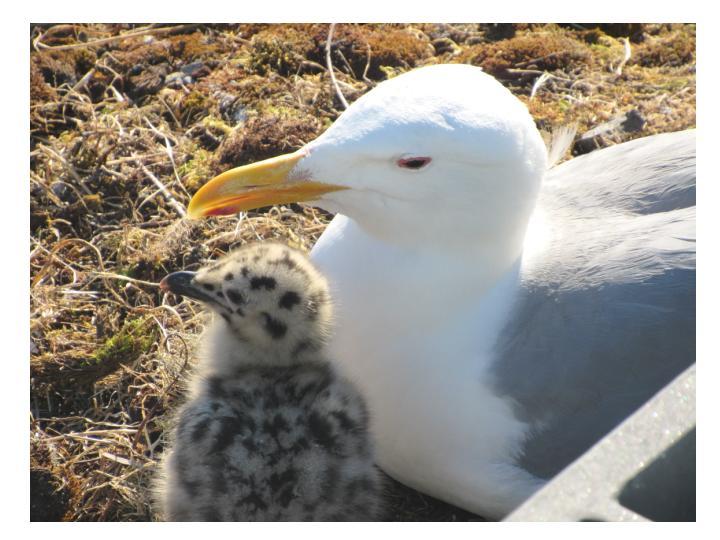(Editor’s note: A grass fire allegedly caused by a homemade firecracker started on Goose Island June 26 and smoldered for many days. The island is located off of Cape San Juan, between San Juan and Lopez.)
The anniversary of the Goose Island fire is an opportunity for islanders to reflect on the growing risk of wildfires on our public lands, public land managers’ preparedness fire-management policy.
The Nature Conservancy did not have arrangements with local authorities for fire suppression. Although their management plan for Goose Island prioritizes the protection of nesting birds, TNC maintained that few birds were hurt (questionable in the absence of any independent assessment), and that native vegetation on the island would benefit from burning. In making this argument, TNC echoed views in the conservation community that burning is an effective means of restoring landscapes modified by historical farming and logging. As far as seabird rookeries are concerned, this policy lacks scientific support.
Seabirds do not typically nest in vegetation, but rather on exposed rocks that may have patchy lichens, mosses, and scattered clumps of salt-tolerant herbaceous plants such as Pacific Gumweed and Seaside Plantain. There is typically more bird guano than soil at nesting sites. Seabird rocks simply do not compare biophysically in any way with public lands such as Young Hill and American Camp, where controlled fires have been set to try to suppress invasive plant species and promote native species.
Nor is there any evidence that seabird rookeries such as Goose Island ever burned prior to European settlement. I have conducted field studies on more than 40 islets and rocks in the archipelago, many of them with seasonal seabird rookeries, and while I have found scattered evidence of pre-contact human hearths and small gardens, I have seen no traces of island-scale clearing fires or wildfires. This should not be surprising.
Fire on a guano-rich rock converts the guano to carbon dioxide, smoke and ash. In the absence of soils and woody plants, the ash blows away or washes away. Small clumps of deeply rooted herbaceous plants may survive the fire and re-grow, but with no subsidy whatsoever from the fire. On the other hand lichens, once burnt, take decades to centuries to re-establish. If birds return, the guano accumulates again, and wind-born seeds may be in it, but there is no reason why the random re-seeding of burnt islands should result in a more desirable salt-tolerant plant community than the one that burned.
There is little evidence that burning benefits the heavily vegetated larger islands, either. Even if we agree that fire played a role in pre-settlement ecosystems here, things have changed in ways that almost certainly change the results of fires: the introduction of fire-tolerant perennial Eurasian pasture grasses, for one. Advocacy of controlled burning is associated with claims that the pre-Contact San Juan Archipelago was predominantly “oak savannah”, which is to say meadows or prairies with scattered Garry oaks. Pollen records from lower Vancouver Island and (just published) Orcas Island indicate that that “oak savannah” was never widespread. At most, there were historically documented oak-dominant woodlands in the Victoria area and central San Juan Island (the “old oak prairie” of which I have written elsewhere). Most of the 19th century rain shadow landscape was either conifer forest, or meadows maintained by Native peoples for their camas gardens and berry patches employing a combination of hoeing, weeding, and periodic light flashy fires.
Judging from the writings of fur traders, sailors and settlers in the 1840s to 1860s, gradual abandonment of villages and gardens in the islands led to an extensive secondary growth of shrubs and conifers that settlers burned. Uncontrolled clearing fires in the mid-19th century created conditions that had not existed under Native American management. Adding sheep resulted in the rapid spread of imported pasture grasses in burnt areas, and suppression of woody shoots. The San Juan Islands of 1900 were less wooded, more open and much more grassy than they had been in 1850 or earlier. The proportion of madrones and oaks may have briefly increased somewhat under these conditions. But conifers have continued to be the dominant trees of the islands for over 8,000 years while most grass in the islands has been non-native for more than a century.
If our future climate includes warmer, drier summers, wildfires will increase in open and public lands. Islanders should not accept uncritically the claim that fires are a benefit to our landscape. On the contrary, we should give serious consideration to adopting more robust fire prevention and firefighting plans for lands that have been accumulating ladder fuels for a century or more. Small-scale burning of native camas gardens in the early 19th century is not meaningful guidance for large-scale, fuel-loaded woodland fires in the 21st century.



